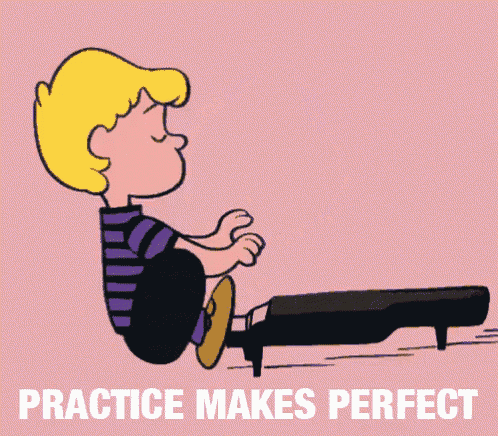Source:
for Mr. Bridge By Andrew Kambites
 Active and Pasive Defence Against NT
Active and Pasive Defence Against NT
Throughout my new series on defence, I aim to look at what you are trying to achieve and what alternatives you have. You will see that opening leads are frequently not clearcut and that experts find them as difficult as you do. Unless stated otherwise, I will assume you are playing teams-of-four or rubber bridge, where the emphasis is on beating the contract rather than saving overtricks. At the end of the series, I will consider how your tactics might change playing duplicate pairs. You are on lead against a no-trump contract. Do you automatically lead the fourth highest of your longest and strongest suit? How about Hand A after this bidding?
| West |
North |
East |
South |
|
|
|
1NT |
| Pass |
3NT |
The End |
|
Hand A :

KJ632

A8

965

873
It is normal enough for you to lead the

3. You are hoping that the spade layout is something like:
Trace the play through to its conclusion. Partner rises with the

Q (third hand plays high). If declarer allows the

Q to win trick 1, partner will return the

8 and you will have set up four spade tricks, which you can complete cashing when you regain the lead with the

A. Your fourth highest spade lead works best if partner has a spade honour to fill the gaps in your suit. What if partner has no spade honour and the spades are distributed like this?
Left to his own devices, declarer might try taking two spade finesses, both of which would fail, so it seems that your fourth highest lead has just thrown a trick away. However, that might not necessarily be fatal. Look at the next layout.
|
 8 7 5 8 7 5
 J 10 9 J 10 9
 K J 10 7 K J 10 7
 A K Q A K Q |
|
 K J 6 3 2 K J 6 3 2
 A 8 A 8
 9 6 5 9 6 5
 8 7 3 8 7 3 |
|
 9 4 9 4
 6 5 4 3 2 6 5 4 3 2
 A 3 A 3
 J 10 6 2 J 10 6 2 |
|
 A Q 10 A Q 10
 K Q 7 K Q 7
 Q 8 4 2 Q 8 4 2
 9 5 4 9 5 4 |
Given time, declarer can easily develop three diamond tricks and two heart tricks to go with the

A-K-Q and

A, unless you can set up three spade tricks first. Ideally, you would like partner to come in twice to lead spades through declarer, but partner only has one entry, the

A. Therefore, you are going to have to lead spades once. Trace it through. Your opening spade lead loses cheaply to the

10. Hopefully, declarer will try to drive out the

A next. Your partner will win and return his last spade. Declarer still has only eight tricks and, when he tries to drive out the

A, you will have enough spades to defeat him. The point of your fourth highest lead was to set up length winners. Some-times, you will succeed: sometimes, you will fail. Nobody in the world is successful with all opening leads and that shouldn’t particularly worry you. Against a nondescript bidding sequence such as 1NT-3NT, you have no reason to avoid a spade lead from Hand A.
However, suppose the bidding has been as in the sequence below. Would you consider leading your

3 now?
The bidding has marked South with at least five spades. The likelihood of your lead giving away a cheap trick has increased dramatically and the chances of making any length tricks arc close to zero. While it is just about possible that partner might have a helpful spade holding like

A-Q, the balance between the risk of leading a spade and the potential gain is heavily loaded against you.
However, there is some good news. If declarer tries to set up his suit by taking spade finesses. he will be disappointed because your

K and

J are sitting over his suit.
If you have a suit with scattered honours and an opponent has bid your suit, you should certainly think twice before leading it against no-trumps in an attempt to set up length tricks.So. If It is misguided to lead a spade from Hand A after the sequence above, what should you lead? You might consider leading the unbid suit, but even if partner has heart length. he is unlikely to have sufficient entries to set up and make hart tricks. An alternative Is to attempt to go passive. I would try a club. Either a diamond or a club would probably give little away. but dummy bid diamonds before clubs, therefore his diamonds rate to be longer, so a club has a greater chance of finding a good holding in partner’s hand. The point is that leading away from honours is a risky strategy. Leading from rubbish rarely does anything for declarer that he could not do for himself. Suppose the layout is:
|

 J 9 4 J 9 4
 A K J 7 3 2 A K J 7 3 2
 A Q 9 6 A Q 9 6 |
|
 K J 6 3 2 K J 6 3 2
 A 8 A 8
 9 6 5 9 6 5
 8 7 3 8 7 3 |
|
 7 4 7 4
 Q 10 6 5 2 Q 10 6 5 2
 10 8 10 8
 K J 10 2 K J 10 2 |
|
 A Q 10 9 8 5 A Q 10 9 8 5
 K 7 3 K 7 3
 Q 4 Q 4
 5 4 5 4 |
A spade Immediately gives declarer his ninth trick but suppose West leads a club East wins and switches to a spade. Where is declarer’s ninth trick coming from? Every finesse he tries will fail. In the sequence above, spades have been bid loudly and clearly, but try to listen to hidden messages from the bidding. Look at this auction:
| South |
North |
| 1NT |
2 |
2 |
3NT |
Without a 4-card major, North would not have tried Stayman. South has shown four hearts and North was not interested, so North must hold four spades. If North has four spades and South has at least two for his 1NT opening bid. partner is marked with at most two spades and it wouldn’t surprise you to learn that he has Just one tiny spade. Clearly, you have very little prospect of establishing spade length winners so why risk leading a spade and giving away a cheap trick? How safe is it to lead passively from a suit with no honours? The most likely fallout is not that you give declarer a trick that he couldn’t have taken himself, but that you save him a guess.
|
 K J 4 K J 4 |
|
 8 7 3 8 7 3 |
|
 Q 6 5 2 Q 6 5 2 |
|
 A 10 9 A 10 9 |
If West leads a club here, declarer has no need to guess who has the

Q.
Generally; the shorter the suit, the
more likely it is that you save declarer a guess. Leading from a holding such as

8-7-4-3-2 is pretty safe, but leading from a singleton or doubleton can easily give the game away. Suppose you decide to lead the

7 from

7-3 and the suit is distributed as here.
|
 Q 5 4 Q 5 4 |
|
 7 3 7 3 |
|
 J 9 6 2 J 9 6 2 |
|
 A K 10 8 A K 10 8 |
Declarer will play low from dummy and capture partner’s

J with his

A, giving him four easy diamond tricks. Of course, declarer could have finessed the

10 himself, but left to his own devices, he would probably have followed the odds and played diamonds from the top, hoping for a .3-3 break or doubleton

J.
Summary: If you lead the fourth highest of your longest and strongest suit against a no-trump contract, you risk giving away a cheap trick, but you hope to establish length winners. If the bidding make it clear that there is little prospect of establishing length tricks in your long suit, you should avoid leading away from a broken honour combination.
If you lead from a long suit in which you have no honour card, your math objective is to avoid conceding cheap tricks, though you might strike lucky and find it is your parner suit. The longer the suit, the safer the lead.
It is not my intention to make a dramatic change to your leading habits, but I would comment that most club players are far too active in their defence. There is nothing reprehensible about defending passively. Just think how many contracts you play where, If you had to do all your own work, you would fail, but defenders help you out.
 Active and Pasive Defence Against NT
Throughout my new series on defence, I aim to look at what you are trying to achieve and what alternatives you have. You will see that opening leads are frequently not clearcut and that experts find them as difficult as you do. Unless stated otherwise, I will assume you are playing teams-of-four or rubber bridge, where the emphasis is on beating the contract rather than saving overtricks. At the end of the series, I will consider how your tactics might change playing duplicate pairs. You are on lead against a no-trump contract. Do you automatically lead the fourth highest of your longest and strongest suit? How about Hand A after this bidding?
Active and Pasive Defence Against NT
Throughout my new series on defence, I aim to look at what you are trying to achieve and what alternatives you have. You will see that opening leads are frequently not clearcut and that experts find them as difficult as you do. Unless stated otherwise, I will assume you are playing teams-of-four or rubber bridge, where the emphasis is on beating the contract rather than saving overtricks. At the end of the series, I will consider how your tactics might change playing duplicate pairs. You are on lead against a no-trump contract. Do you automatically lead the fourth highest of your longest and strongest suit? How about Hand A after this bidding?




























